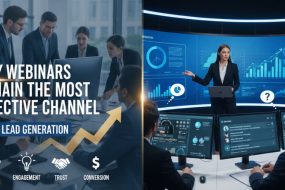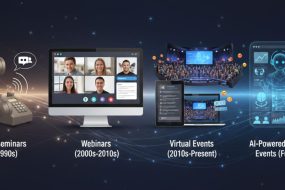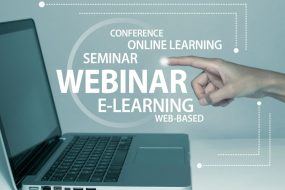
Webinars have become a cornerstone of modern digital communication. Whether you’re a business owner, educator, or marketing professional, understanding online seminars can transform how you connect with your audience.
This guide covers everything you need to know about webinars—from their basic definition to the various types available and why they matter for your business or educational goals.
What is a Webinar?
A webinar is a live or recorded online presentation that allows you to share information with a remote audience. The term combines “web” and “seminar,” creating an interactive digital experience where participants can join from anywhere with an internet connection.
Unlike traditional meetings, webinars typically feature one or more presenters speaking to a larger audience. Participants can usually ask questions through chat features, polls, or Q&A sessions, making the experience interactive despite the digital format.
Most webinars use specialized software platforms that support features like screen sharing, live chat, breakout rooms, and recording capabilities. Popular webinar platforms include Zoom, GoToWebinar, and Microsoft Teams.
Why Webinars Are Important

Webinars offer unique advantages that make them valuable for businesses, educators, and organizations of all sizes.
Cost-Effective Communication
Webinars eliminate travel expenses and venue costs. You can reach hundreds or thousands of people without the overhead of physical events. This makes them particularly attractive for small businesses and startups with limited budgets.
Global Reach
Geography becomes irrelevant with webinars. You can connect with participants across different time zones and countries, expanding your potential audience dramatically. This global reach opens new markets and opportunities that would be impossible with in-person events.
Lead Generation and Sales
Webinars excel at generating qualified leads. Participants who register and attend are typically genuinely interested in your topic, making them high-quality prospects. Many businesses report conversion rates of 20-40% from webinar attendees.
Educational Value
Webinars provide an excellent platform for sharing knowledge and expertise. The interactive format allows for real-time questions and discussions, creating a more engaging learning experience than passive content consumption.
Measurable Results
Most webinar platforms provide detailed analytics. You can track attendance rates, engagement levels, and participant behavior. This data helps you improve future presentations and measure ROI effectively.
Types of Webinars

Different webinar formats serve various purposes and audiences. Understanding these types helps you choose the right approach for your goals.
Live Webinars
Live webinars happen in real-time with immediate interaction between presenters and participants. They create urgency and excitement, encouraging higher attendance rates. Live formats work well for product launches, breaking news, or time-sensitive announcements.
The main challenge with live webinars is scheduling across different time zones. Technical issues can also disrupt the experience, so having backup plans is essential.
Pre-recorded Webinar
Pre-recorded webinars, also called automated webinars, play previously recorded content at scheduled times. They appear live to participants but allow presenters to perfect their delivery and avoid technical mishaps.
This format provides consistency and allows you to schedule multiple sessions without being physically present. However, they lack the spontaneous interaction that makes live webinars engaging.
Hybrid Webinar
Hybrid webinars combine live and recorded elements. You might play a pre-recorded presentation followed by a live Q&A session. This approach gives you the best of both worlds—polished content delivery with real-time interaction.
Educational Webinar
Educational webinars focus on teaching specific skills or sharing knowledge. They’re popular in corporate training, academic institutions, and professional development programs. These sessions typically include detailed presentations, demonstrations, and extensive Q&A periods.
Product Demo Webinars
Product demo webinars showcase software, tools, or services in action. They’re powerful sales tools that allow prospects to see exactly how your product works. Interactive demos where participants can ask specific questions tend to be most effective.
Panel Webinars
Panel webinars feature multiple experts discussing a topic from different perspectives. They provide diverse viewpoints and create dynamic conversations. The variety of voices keeps audiences engaged and offers comprehensive coverage of complex subjects.
Interview Webinar
Interview webinars involve one host interviewing an expert or thought leader. They’re easier to organize than panels and can attract audiences interested in the interviewee’s expertise. The conversational format feels natural and engaging.
How to Get Started with Webinars
Choose a webinar platform that fits your needs and budget. Consider factors like participant limits, recording capabilities, and integration with your existing tools.
Plan your content carefully. Structure your presentation with clear objectives, engaging visuals, and interactive elements. Practice your delivery to ensure smooth execution. Moreover, it is also very important to choose the right High-Converting Webinar Title.
Promote your webinar through multiple channels. Use email marketing, social media, and your website to drive registrations. The more targeted your promotion, the higher your attendance rates will be.
Test your technology before going live. Check your internet connection, audio quality, and screen sharing capabilities. Have backup plans ready for common technical issues.
Your Next Steps with Webinars
Webinars offer a powerful way to connect with your audience, share expertise, and grow your business. The key is choosing the right webinar type for your goals and executing it professionally.
Start small with a simple educational webinar to learn the basics. As you gain experience, you can explore more sophisticated formats like panels or hybrid events.
Remember that a successful webinar requires preparation, promotion, and follow-up. Focus on delivering genuine value to your audience, and the business benefits will follow naturally.



















No Comments